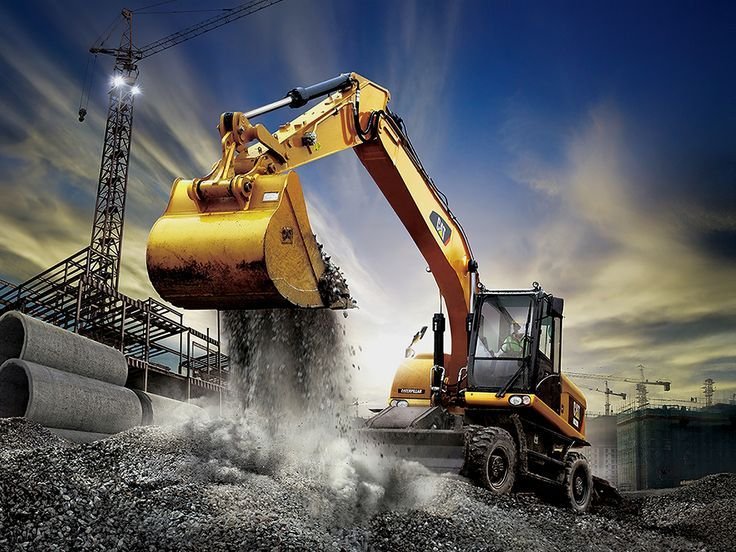
Mining operations rely on heavy-duty machinery to extract valuable minerals from the earth efficiently and safely. Different types of mining equipment are designed for specific tasks, each contributing to the overall process. In this post, we’ll take a closer look at some of the most common mining equipment used: excavators, dump trucks, bulldozers, drilling rigs, wheel loaders, and graders.
- Excavator: The Excavation Powerhouse
Excavators are fundamental to the mining process. These machines are used to dig, scoop, and transport material, including overburden (soil and rocks) and minerals. Equipped with hydraulic arms and a variety of attachments such as buckets and hammers, excavators are versatile and can tackle a range of tasks. In mining, they are primarily used for:
Excavating overburden
Digging and collecting minerals
Moving earth and other materials for further processing
Their ability to work in challenging conditions and perform complex tasks makes them a cornerstone of mining operations.
- Dump Truck: Efficient Material Transport
After excavation, the mined materials need to be transported across the site. Dump trucks are designed to carry large loads of soil, rock, and mineral ores. These trucks are built to handle heavyweights and rough terrains, making them ideal for mining environments. Key features of dump trucks include:
Large payload capacity for carrying tons of material
Durability to withstand harsh conditions
Quick transport between excavation sites and processing areas
Without dump trucks, moving large quantities of material would be much more difficult and time-consuming.
- Bulldozer: Clearing and Leveling the Land
Bulldozers are used in mining operations for their ability to push, level, and clear land. These powerful machines are essential for preparing a site before excavation or for reshaping the landscape as mining progresses. Bulldozers are typically used for:
Clearing vegetation and debris
Pushing large amounts of soil and rock
Preparing roads and pathways for other equipment
Their strong tracks allow them to navigate rugged terrains while moving substantial quantities of material.
- Drilling Rig: Breaking Ground for Exploration
Drilling rigs are essential for exploring mineral deposits and preparing mining sites for extraction. These machines drill deep into the earth to collect core samples, measure mineral density, and assess the viability of mining in a particular area. Drilling rigs are used for:
Drilling boreholes for exploration
Gathering samples for analysis
Setting up blasting sites for extraction
Drilling rigs provide crucial data for making informed decisions about where and how to mine, ensuring resources are extracted efficiently.
- Wheel Loader: Versatile Material Handling
Wheel loaders are another critical piece of equipment in the mining process. These machines are used for scooping, loading, and transporting material from one point to another. Wheel loaders are equipped with large buckets that can carry heavy loads, making them perfect for handling materials in and around the mining site. Their main functions include:
Loading excavated materials into dump trucks
Moving materials to stockpiles
Clearing debris and material from the mining site
Their speed, mobility, and maneuverability make wheel loaders ideal for a variety of tasks in the mining operation.
- Grader: Shaping the Terrain
Graders are used to shape and level the ground to create smooth, stable surfaces for roadways, haul roads, or the foundation of a mine. Graders are essential for maintaining the infrastructure of a mining site and ensuring that other equipment can operate safely and efficiently. Their primary uses include:
Leveling and grading roads
Creating slopes for drainage
Preparing surfaces for construction or other activities
A grader’s precision in leveling surfaces helps maintain safety and efficiency across the mining site.
Conclusion
Each piece of mining equipment has a specific role, but they all work together to ensure that the mining process runs smoothly. From excavating and drilling to transporting and shaping, these machines enable mining operations to extract resources in the most efficient and cost-effective manner. Understanding the function and importance of each type of equipment can help ensure better planning and execution in the mining industry.
